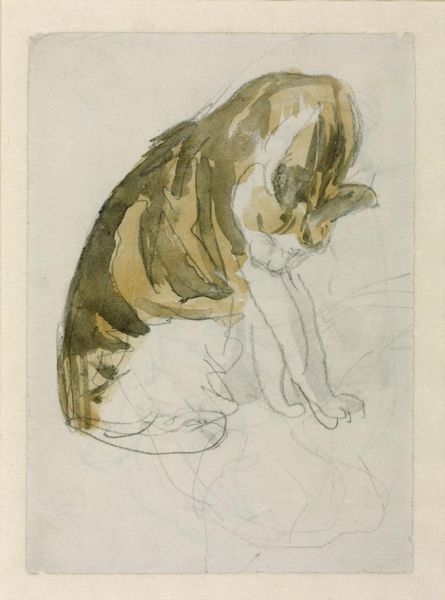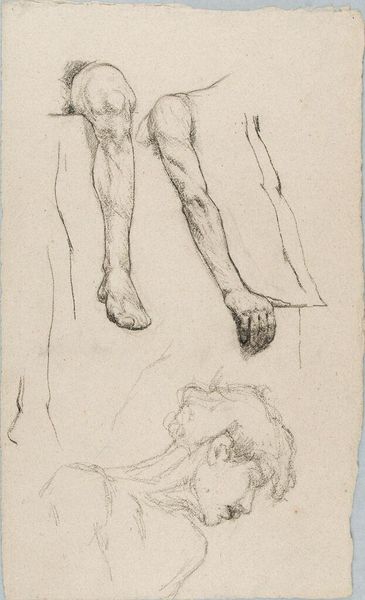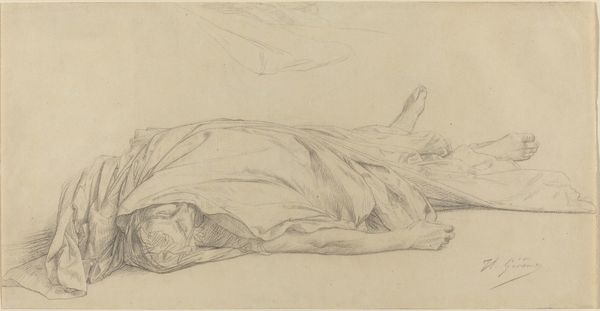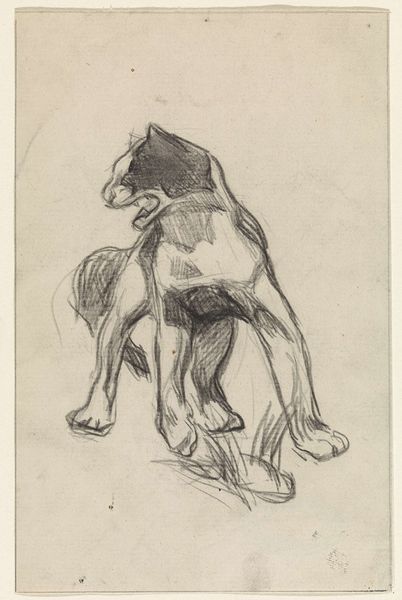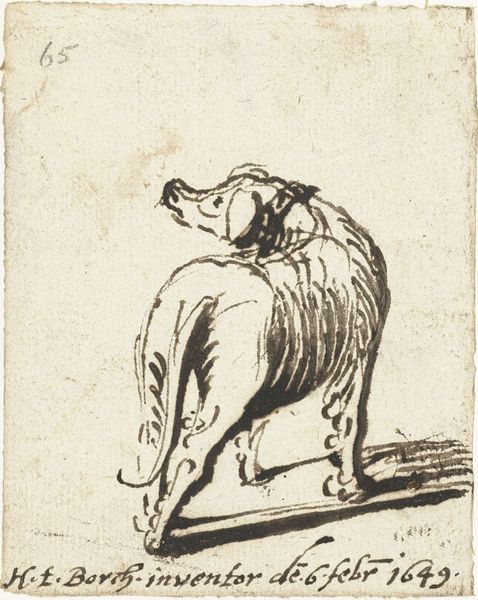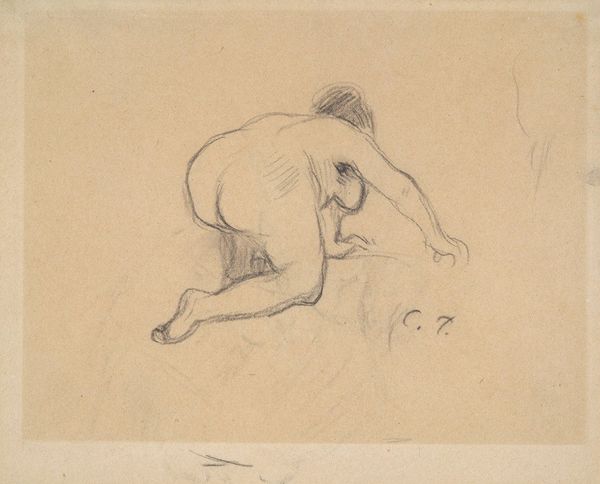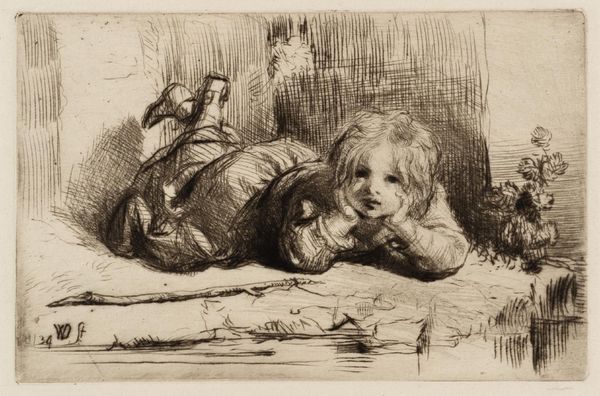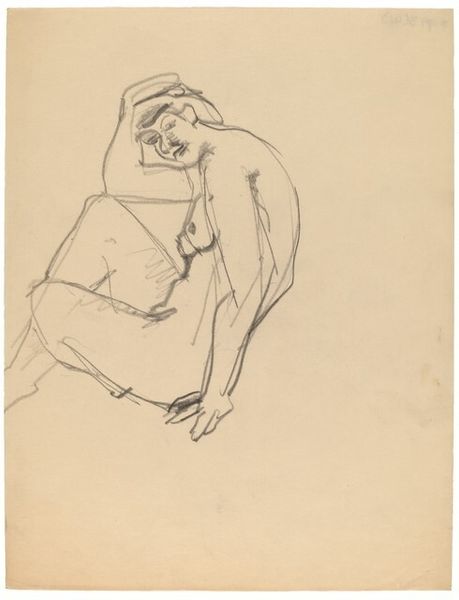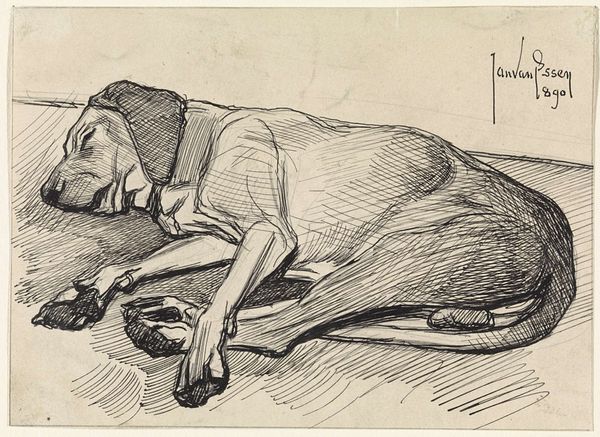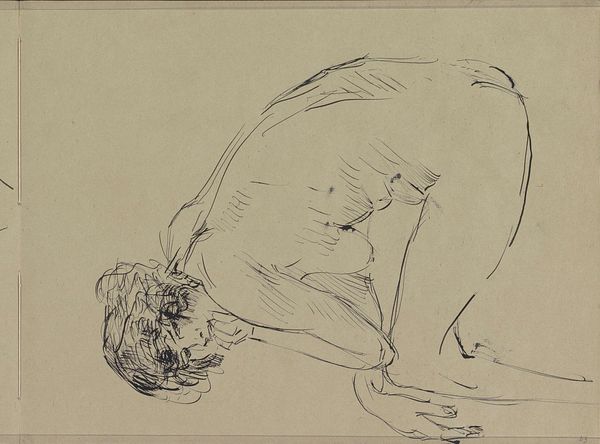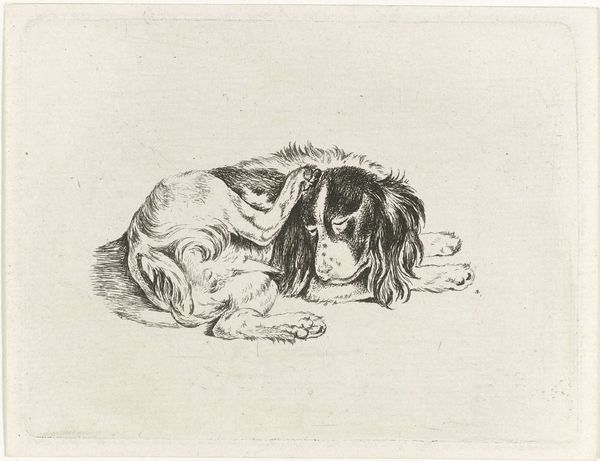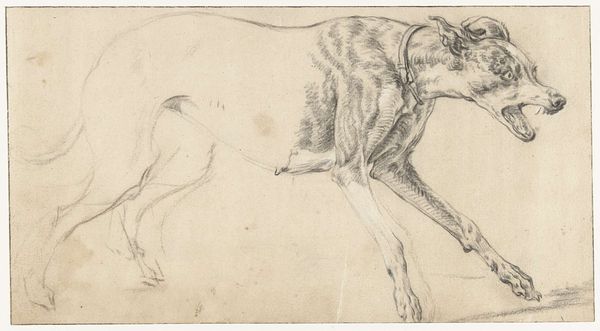
drawing, pencil, graphite
#
portrait
#
drawing
#
amateur sketch
#
light pencil work
#
pencil sketch
#
dog
#
incomplete sketchy
#
figuration
#
personal sketchbook
#
idea generation sketch
#
ink drawing experimentation
#
pen-ink sketch
#
pencil
#
graphite
#
sketchbook drawing
#
realism
#
initial sketch
Dimensions: height 249 mm, width 194 mm
Copyright: Rijks Museum: Open Domain
Editor: This is a drawing called "Sheet of Studies of Dogs," dating from around 1900-1925. It’s unsigned, but housed at the Rijksmuseum, made with pencil and graphite. I'm really struck by how immediate and intimate it feels, like we're peering into the artist's sketchbook. What do you see in it? Curator: It's the immediacy that captivates me, too. This isn’t a finished piece striving for idealized beauty. These dogs aren't symbols of fidelity or hunting prowess necessarily, but rather observations of canine essence captured in fleeting moments. How does that contrast with say, more formal dog portraiture of the 18th and 19th centuries? Editor: It feels so much more personal, less about the dog's breed and more about their character. Curator: Precisely! The sketch's inherent incompleteness, the tentative lines... they invite us to complete the image in our own minds. Look at the repetition of form. What does that repetition of the dogs represent? What’s going through the artist’s mind, capturing these creatures in this way? Editor: Perhaps it suggests an exploration of different poses or aspects of their character... trying to capture the dogs' spirit, like you said. Curator: Consider the cultural role of dogs during this period. They were transitioning from working animals to beloved companions. Might these sketches reflect a shift in human-animal relationships? Notice that the unfinished quality lets them capture movement so well. Do these canines mirror back something about ourselves, or the spirit of a time, maybe? Editor: That's a really interesting way to put it – almost like the dog is evolving as we are. It gives this simple sketch a surprising depth. I hadn’t considered that it documents how people were building different relationships with the animals. Curator: Precisely. The dialogue continues across time, as long as we keep sketching.
Comments
No comments
Be the first to comment and join the conversation on the ultimate creative platform.
